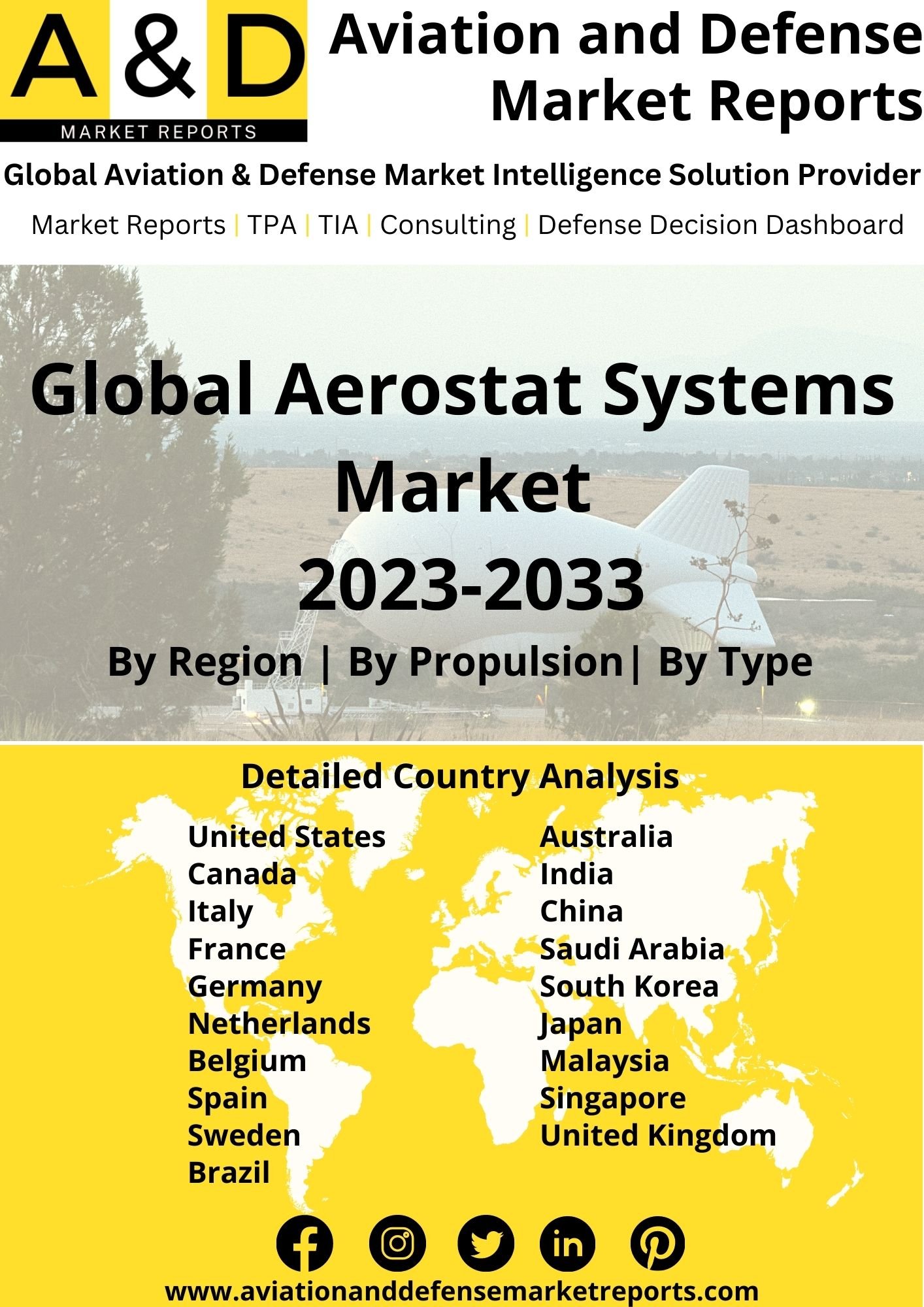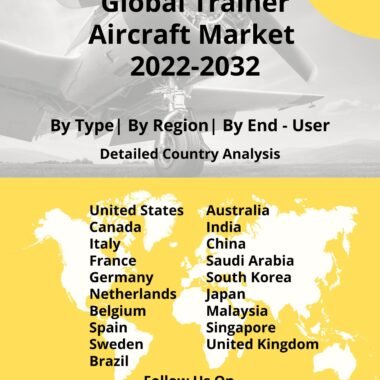Description
Aerostat Systems Market
Frequently Asked Questions of Aerostat Market
The aerostats, which are substantial cloth bags filled with helium, can soar up to a height of 15,000 feet (4,600 metres) while being attached to a single cable. The largest can hoist a cargo of 1,000 kg to a working altitude that offers radar coverage at ground level and to the downward side. The aerostat is made up of four main components: the hull and fin, windscreen and radar platform, airborne power generator, rigging, and tether. These components are kite balloons that receive buoyancy from being lighter than air as well as aerodynamic lift from relative wind. Two sections of the aerostat’s hull are divided by a gas-tight fabric wall. Helium is used to fill the upper chamber, which also serves as the aerostat’s lifting mechanism. The hull’s lower chamber is a pressurized air space.
Some of the largest tethered aerostats now in use are part of TCOM’s Strategic Class of aerostat systems. The devices high payload capacity and wide range of altitude make them perfect for aerial surveillance applications. Aerostats of the TCOM Strategic Class can be deployed sustainably for up to 30 days at a time. Aerostats of the Strategic Class are often designed for surveillance tasks involving the detection of fast-moving, low-flying objects, such as cruise missiles and light aircraft. Long-range radar, active and passive communications gear, as well as COMINT/ELINT technology, may all be carried by strategic class payloads, which frequently soar up to 15,000 feet over ground control stations. Strategic Class aerostats need a fixed mooring station due to their massive size, high altitude, and significant payload.
Major factors driving Aerostat Systems Market Growth
Aerostat System Market size are considered to be cost effective to operate when compare to other aerial platforms. The increasing demand for cost effective ISR systems will drive the aerostat Systems market Size. Aerostat systems market forecast with COMINT and ELINT payloads are also in high demand due to geo political scenario in Europe.
Trends influencing the Aerostat Systems Market Size
Miniaturization of sensors and sensor fusion will be one of the trends that will influence the growth of aerostat systems market trends Development of advanced lightweight COMINT and ELINT payloads will also influence the growth of aerostat systems market growth.
Aerostat Systems Market Forecast & Dynamics
Increasing defense spending will drive the Aerostat Systems market growth for new procurement activities. Procurement will also be driven by prevailing geo political conditions in Europe and the Asia Pacific. Cross border aggression will give way to increased combat training and war-games in these regions. The increasing demand for COMINT and ELINT systems will also drive the growth of market. All these factors will ensure significant growth of the ATR market.
Aerostat Systems Market Analysis for Recent Developments
The Aerostat Systems Market reports that Aerostar International was purchased from Raven Industries, Inc. by TCOM Holdings, the parent company of TCOM, LP, the world leader in elevated ISR Awareness Solutions and the 2019 Platinum ‘ASTORS’ Award Winner for Best Persistent Aerial Monitoring. Aerostar, a global pioneer in the design, production, integration, and use of permanent stratospheric platforms and radar systems, is based in Sioux Falls, South Dakota. Maintaining security is a changing mission with revolutionary threats to shifting targets in this era of rapid technological advancement. For force protection, remote warning and targeting, critical infrastructure, and maritime and border security tasks, TCOM provides multi-domain awareness solutions. Aerostat Systems market forecast the business’s specialized elevated ISR platforms that gather data from numerous integrated sensors and deliver crucial situational awareness via
The Aerostat Systems Market reports The Pentagon is developing balloons as part of a new strategy to outperform rivals China and Russia. The Aerostat Systems Market trends, high-altitude inflatables, which would be added to the Pentagon’s massive monitoring network and may potentially be used to follow hypersonic weapons, would fly between 60,000 and 90,000 feet in the air. The concept might sound like science fiction, but according to Pentagon budget documents, the military services are beginning to use this technology. According to Aerostat Systems Market analysis, Tom Karako, senior fellow for the International Security Program and director of the Missile Defense Project at the Center for Strategic and International Studies, “high or very high-altitude platforms have a lot of benefits for their endurance on station, maneuverability, and also flexibility for multiple payloads.” Because the military may utilize the balloons for a variety of purposes, the Pentagon continues to invest in these programmes. According to the Aerostat systems market analysis the budget papers, in which, the Pentagon has spent around $3.8 million on balloon projects over the last two years and intends to spend $27.1 million in fiscal year 2023 to continue work on a number of initiatives.
The market emerges as a key player in the realm of persistent aerial surveillance, providing nations with cost-effective and versatile solutions for border security, intelligence, and reconnaissance missions. Aerostat systems, characterized by tethered balloons equipped with sensors and communication payloads, offer a stable and prolonged vantage point, making them invaluable for monitoring vast areas in real-time. The market is witnessing significant growth driven by advancements in sensor technologies, lightweight materials, and tethering systems. Aerostats provide a strategic advantage by enhancing situational awareness and facilitating continuous surveillance over extended periods. These systems are employed for various applications, including border surveillance, critical infrastructure protection, and military operations, contributing to enhanced security capabilities.
Technological innovations within the Aerostat Systems market include the integration of advanced sensor suites, communication systems, and aerodynamic designs, optimizing performance and reliability. Geopolitical considerations, coupled with the need for persistent surveillance in contested regions, drive investments globally. The global Aerostat Systems market in 2023 signifies a convergence of cutting-edge technology and strategic imperatives in the field of aerial surveillance. As nations strive to bolster their defense and security capabilities, Aerostat Systems stand as a testament to the adaptability and efficiency required to meet the evolving challenges of the contemporary security landscape.
![Global_Aerostat_Systems_Market_2024-2034[1] Global Aerostat Systems Market](https://aviationanddefensemarketreports.com/wp-content/uploads/2022/08/Global_Aerostat_Systems_Market_2024-20341.jpg)






